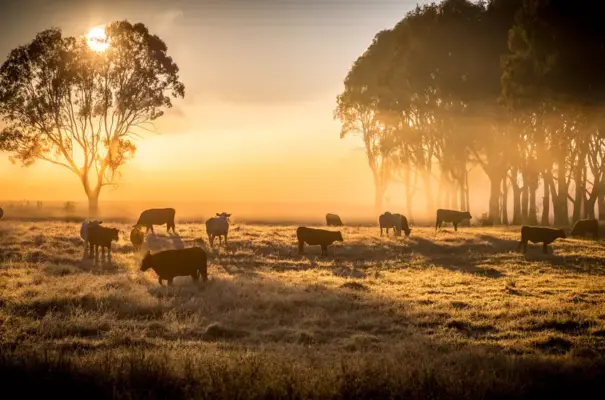Cattle production is a fundamental economic activity for communities worldwide, especially vulnerable ones. According to the study Moving Towards Sustainability: The Livestock Sector and the World Bank, by the World Bank Group, approximately 500 million producers globally depend on raising cattle for food, income, and a safety net in times of need. This gains even greater importance for livestock farmers living in challenging environments, such as very cold, mountainous, and arid regions. In places with such adverse conditions, livestock production can be the only way to sustainably convert local natural resources not only into food but also into income generation.
Livestock as a savings account in the world’s coldest region
A striking example of livestock production in adverse environments is found in the world’s coldest region, Siberia. Yakutia, a republic in the Siberian region of Russia, is known for its extremely low temperatures and long, harsh winters; average January temperatures can range from -25 °C to -50 °C, depending on the location. It is home to the city of Yakutsk, known as the coldest in the world, with temperatures that can reach -60°C in winter. Meanwhile, the village of Oymyakon is considered the coldest permanently inhabited locality on the planet, where temperatures have reached -71.2°C.
This intense cold hinders agriculture and animal husbandry in the region. It is the raising of beef cattle that ensures the subsistence of local communities. The sale of these animals generates quick income, allowing livestock farmers to invest in planting materials, fertilizers, or hiring labor for agricultural activities. These benefits can expand the cultivated area, increase yields, and improve productivity. In other words, both small and large livestock function as a kind of “savings account,” used to acquire agricultural inputs, invest in other income-generating activities, or pay for expenses such as education, medical bills, and funeral costs.
Despite the difficulties, the inhabitants of these remote regions also survive through agriculture. To do this, they rely on heated greenhouses, where they cultivate vegetables during the colder months.
Adaptation and resilience
The cattle of Yakutia are adapted to the severe climate, belonging to a hardy breed known as Yakutian cattle or “Sakha Yatki.” These animals have developed a thick layer of skin and coat that protects them from the intense cold. They also have the ability to find food under deep snow because they scrape away ice and snow to reach the grass. Yakutian cattle also have the capacity to regulate their body temperature and exhibit a slow metabolism, which ensures their survival in extremely adverse conditions.
Local livestock farming has other applications: manure is used as a natural fertilizer, which aids in soil preparation, and also as a type of thermal insulator. Cow dung is spread on the walls of stables to help retain heat. Furthermore, families milk their cows to obtain enough milk for their own consumption and for sale. During the short summer months (from July to September), producers dedicate themselves to harvesting hay to ensure their herds have sufficient food for the long winters.
Cattle in the Sahara
The report Livestock & the environment: finding a balance, produced by the Commission of the European Communities, the World Bank, and the governments of Denmark, France, Germany, the Netherlands, the United Kingdom, and the United States of America, reveals that, “for approximately 100 million people in arid areas, and probably a similar number in other zones, grazing livestock is the only possible source of livelihood.”
According to the document, in arid pastures, traditional transhumance production systems – where livestock farming involves the seasonal movement of herds and their herders between different areas – are highly efficient, ensuring livestock production in adverse environments, even in the Sahara Desert. This ancient practice, present in various cultures and regions worldwide, plays an important role in the conservation of ecosystems and biodiversity, allowing for adaptation to climatic variations and the availability of natural resources.
The transhumance production system, according to the report, is adopted by producers in Mali (in West Africa), most of which is occupied by the Sahara Desert. The system is also present in cattle farming in Botswana, in southern Africa. In these two locations, again according to the report, cattle production is two to three times higher—and at a much lower cost in non-renewable fuel resources—than production in sedentary systems or cattle farming under similar climatic conditions in Australia and the United States. The importance of livestock farming in the region is highlighted in the study Why Is Production of Animal Source Foods Important for Economic Development in Africa and Asia?, published in the scientific journal Animal Frontiers in 2020. According to the document, the production of animal source foods contributes to economic development, generating income and employment for livestock farmers and stakeholders along the livestock value chains. “In Africa and Asia, livestock is an asset, a reserve of wealth for resilience. Local livestock production increases the availability of animal source foods as a source of protein and micronutrients, necessary for a healthy population,” states an excerpt from the document’s text. It is livestock production demonstrating strength and resilience, even in adverse environments, whether in the desert or the Arctic.




